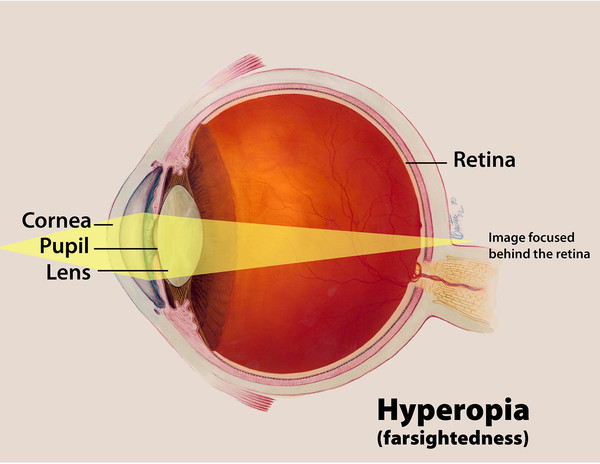Guest Blog: What Is Hyperopia And Its Treatment?


Also known as farsightedness, Hyperopia is a common condition of the eye where an individual experiences a clear vision of distant objects, but the closer objects appear blurry. This condition may be inherited and affects nearly 25% of the adult population.
What is hyperopia?
Hyperopia is a refractive error of the eye wherein the eye does not refract light properly to focus and form a clear image at the back of the eye. This results in the individual seeing distant objects clearly but failing to see closer objects with clarity.
What are some hyperopia causes?
This condition tends to occur when –
- The eye is shorter than usual,
- The cornea or the front window of the eye is too flat.
This results in the image formation beyond the retina and not on it as the case should be. This makes it difficult for the viewer to focus on books, the fine print of the newspaper, use computers and digital devices.
Hyperopia can also be caused due to other conditions such as diabetes, lens dislocation, eye tumours etc.
What is the latent hyperopia treatment?
Latent Hyperopia is when the focusing muscles toil extra hard to improve the eye’s focusing power, masking the farsightedness condition. Latent Hyperopia results in eye strain, fatigue and eyesore. This is especially found in children under the age of 10 years, and some children even outgrow the condition as the length of the eye improves. As a result, child hyperopia treatment might not be required.
In mild cases of Hyperopia, one’s eyes may be able to correct without corrective lenses. But in more severe cases, one might have to wear farsighted glasses or contact lenses, to alter the entry of light into the eye.
Symptoms of hyperopia
The main symptoms are eye strain, fatigue, aching or tearing eyes, poor hand-eye coordination, the occasional crossing of the eye (especially in children), and difficulty focusing on the objects nearby.
Diagnosis of hyperopia
Diagnosis of the same is through cycloplegic refraction to determine the true extent of farsightedness by temporarily paralyzing the muscles that control accommodation.
About the author- Prof. Dr. Mahipal S Sachdev, Chairman and Medical Director, Center for Sight, New Delhi
